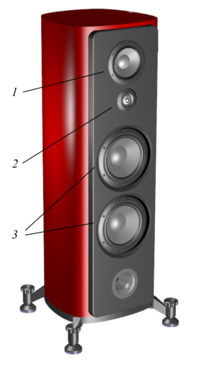
Photo from wikipedia
Abstract In this paper, the vibro-acoustic model for predicting the sound attenuation performance of a cavity-backed membrane duct silencer is established via an improved Fourier series method, in which the… Click to show full abstract
Abstract In this paper, the vibro-acoustic model for predicting the sound attenuation performance of a cavity-backed membrane duct silencer is established via an improved Fourier series method, in which the membrane vibration and cavity acoustic fields are both constructed as the superposition of standard Fourier series and supplementary polynomials to tackle the differential discontinuity issues encountered at such elastic edge restraint and/or coupling interface. The energy formulation is employed to describe the whole structural-acoustic interaction among the membrane vibration, cavity sound field as well as the sound propagation in duct environment. The coupled system response under the upstream plane wave excitation is then solved through the Rayleigh-Ritz procedure. Numerical examples are then presented to illustrate the correctness and effectiveness of the proposed model. The predicted results from the current method are compared with those derived from other approach and experimental measurement available in literature, satisfactory agreements are observed for these validation studies. Based the model established, the coupling effects of boundary restraining stiffness and tensile force on the sound attenuation performance of such cavity-backed membrane duct silencer are discussed and analyzed, the results show that there exists an optimal window of these two parameters matching. This work can provide some useful insight for the effective design of such membrane silencing system.
Journal Title: Applied Acoustics
Year Published: 2017
Link to full text (if available)
Share on Social Media: Sign Up to like & get
recommendations!